Álgebras y tramas en el cálculo de riesgos
DOI:
https://doi.org/10.22380/2539472X.1214Palabras clave:
antropología de la salud, antropología médica, epidemiología, estudios de riesgo, salud públicaResumen
Mediante la metáfora borgeana de “el álgebra y el fuego” se describen y comentan los modos como epidemiólogos y salubristas, por un lado, y antropólogos y sociólogos, por otro, trabajan, en frío, la noción de riesgo para la salud y la vida. Con ejemplos se expone la complejidad de las tramas de riesgo que construyen los que juegan, en caliente, con la salud y la vida de otros, así como la naturaleza de las álgebras que aplican a su situación los que corren los riesgos y sufren las consecuencias de sus decisiones. Estas consideraciones se tratan desde un punto de vista metodológico y técnico, centrado en los diseños especializados de los estudios sobre riesgos.
Descargas
Referencias bibliográficas
Abell, P. 2004. “Narrative explanation: An alternative to variable centered explanation”. Annual Review of Sociology. 30. DOI: https://doi.org/10.1146/annurev.soc.29.010202.100113
Alonso, P., J. Sacarlal, J. J. Aponte, A. Leach et al. 2004. “Efficacy of the RTS,S/AS02A vaccine against Plasmodium falciparum infection and disease in young African children: Randomised controlled trial”. The Lancet. 364 (9443).
Beck, U., A. Giddens Y S. Lash. 2001. Modernización reflexiva: política, tradición y estética en el orden social moderno. Alianza Editorial. Barcelona.
Berkman, L. F. 2004. “Introduction: Seeing the forest and the trees: from observation to experiments in social epidemiology”. Epidemiologic Reviews. 26. DOI: https://doi.org/10.1093/epirev/mxh012
Bernard, H. R. 1995. Anthropological research methods: Quantitative and qualitative approaches. Altamira Press. Walnut Creek.
Bhrolchain, M. N. 2001. “’Divorce effects’ and causality in the social sciences”. European Sociological Review. 17 (1). DOI: https://doi.org/10.1093/esr/17.1.33
Borges, J. L. [1949] 1974. “Nathaniel Hawthorne”. Obras completas. Emecé Editores. Buenos Aires.
Bourdieu, P. 1980a. Les règles de l’art: genèse et structure de champ littéraire. Éditions du Seuil. París.
–. 1980b. Le sens pratique. Les Éditions Minuit. París.
Brewer, S. 1996. “Semantics, pragmatics and the reasonal force of legal argument by analogy”. Harvard Law Review. 109.
Brown, H. I. 2000. “Judgement, role in science”. En W. H. NewtonSmith (ed). A companion to the philosophy of science. Oxford University Press. Oxford.
Bucalla, C. M. Y V. Palma. 2002. “Da compreensão da vulnerabilidade social ao enfoque multidisciplinar. From understanding social vulnerability to a multidisciplinar outlook”. Revista de Saúde Pública. 36 (4) Supl. DOI: https://doi.org/10.1590/S0034-89102002000500016
Caillois, R. 1986. Los juegos y los hombres: la máscara y el vértigo. Fondo de Cultura Económica. México.
Campbell, D. T. Y J. C. Stanley. 1966. Experimental and quasi-experimental designs. Rand McNally. Chicago.
Cook, T. D. Y D. T. Campbell. 1979. Quasi-experimentation: Design and analysis issues for field settings. Rand McNally. Chicago.
Cutter, S. L. 2003. “Vulnerability of science and the science of vulnerability”. Annals of the Association of American Geographers. 93 (1). DOI: https://doi.org/10.1111/1467-8306.93101
Dantier, B. 2003. “La chose sociologique et sa représentation: introduction aux règles de la méthode sociologique d’Émile Durkheim”. http:// www.uqac.uquebec.ca/zone30/Classiques_des_sciences_sociales/ index.html DOI: https://doi.org/10.1522/cla.dab.cho
Delor, F. Y M. Hubert. 2000. “Rethinking the concept of vulnerability”. Social Science and Medicine. 50. DOI: https://doi.org/10.1016/S0277-9536(99)00465-7
Denzin, N. K. E Y. Lincoln (eds.). 2000. Handbook of qualitative research. Sage Publications. Thousand Oaks.
Douglas, M. 1966. Purity and danger: An analysis of conception of polution and taboo. Routledge and Kegan Paul. Londres.
–. 1986a. How institutions think. Syracuse University Press. Syracuse, NY.
–. 1986b. Risk acceptability according to the social sciences. Russel-Sage Foundation. Thousand Oaks.
–. 1992. Risk and blame: Essays in cultural theory. Routledge. Londres.
Douglas, M. Y A. Wildavsky. 1982. Risk and culture. California University Press. Berkeley.
Durkheim, E. [1895] 1987. Les règles de la méthode sociologique. Presses Universitaires de France. París.
Duvignaud, J. 1980. Le jeu du jeu. Baland. París.
Eco, U. Y T. Shebeok (eds.). 1989. El signo de los tres: Dupin, Holmes, Peirce. Editorial Lumen. Barcelona.
Elster, J. 1989. Ulises y las sirenas: estudios sobre racionalidad e irracionalidad. Fondo de Cultura Económica. México.
Fee, E. Y N. Krieger. 1993. “Understanding AIDS: Historical interpretations and the limits of biomedical individualism”. American Journal of Public Health. 83. DOI: https://doi.org/10.2105/AJPH.83.10.1477
Feyerabend, P. 1999. Conquest of abundance: A tale of abstraction versus the richness of being. Edited by Bert Terpstra. The University of Chicago Press. Chicago.
Foucault, M. 1966. El nacimiento de la clínica: una arqueología de la mirada médica. Siglo XXI Editores. México.
Geertz, C. 1994. Conocimiento local: ensayos sobre la interpretación de las culturas. Paidós Ibérica. Barcelona.
–. 1995. La interpretación de las culturas. Gedisa. Barcelona.
Gelman, A. 2004. “Exploratory data analysis for complex models”. Journal of Computational and Graphical Statistics. 13 (4). DOI: https://doi.org/10.1198/106186004X11435
Giere, R. N. 1988. Explaining science: A cognitive approach. University of Chicago Press. Chicago. – DOI: https://doi.org/10.7208/chicago/9780226292038.001.0001
–. 1992. Cognitive models of science (Minnesota Studies in the Philosophy of Science. Vol. 15). University of Minnesota Press. St. Paul.
–. 2000. “Cognitive approaches to science”. En W. H. NewtonSmith (ed.). A companion to the philosophy of science. Oxford University Press. Oxford.
Ginzburg, C. 1994. “Indicios: raíces de un paradigma de inferencias indiciales”. En Mitos, emblemas, indicios: morfología e historia. Gedisa. Barcelona.
Goodman, N. 1968. Languages of art. The Bobbs-Merrill Co. Nueva York.
–. 1978. Ways of worldmaking. Hackett Publishing Co. Nueva York.
–. 1984. Of mind and other matters. Harvard University Press. Cambridge, Mass.
Graves, P. Y H. Gelbhand. 2004. “Vaccines for preventing malaria”. (Cochrane Review). http://www.mediscope.ch/cochrane-abstracts/ ab000129.htm. Consultado el 30 de septiembre de 2004. DOI: https://doi.org/10.1002/14651858.CD000129
Grimes, D. Y K. F. Shulz. 2002. “An overview of clinical research: The lay of the land”. The Lancet. Epidemiologic Series. 359. DOI: https://doi.org/10.1016/S0140-6736(02)07283-5
Habermas, J. 1971. Knowledge and human interest. Beacon Press. Boston. DOI: https://doi.org/10.1007/978-1-349-15388-6_3
Harrison, C. 1978. Mosquitoes, Malaria and man: A history of the hostilities since 1880. E. P. Dutton. Nueva York.
Homedes, N. Y A. Ugalde. 2001. “Improving the use of pharmaceuticals through patient and community level interventions”. Social Science and Medicine. 52. DOI: https://doi.org/10.1016/S0277-9536(00)00131-3
Humphreys, P. 2000. “Causation”. En W. H. Newton Smith (ed.). A companion to the philosophy of science. Oxford University Press. Oxford.
Jeffrey, C. M. 1976. “Malaria control in the twentieth century”. American Journal of Tropical Medicine and Hygiene. 25. DOI: https://doi.org/10.4269/ajtmh.1976.25.361
Kalipeni, E. 2002. “Health and disease in Southern Africa: A comparative and vulnerability perspective”. Social Science and Medicine. 50.
Karmiloff-Smith, A. 1992. Beyond modularity. The MIT Press. Cambridge, Mass.
Kawachi, S. S. V. 2004. “Income inequality and health: What have we learned so far?”. Epidemiologic Reviews. 26. DOI: https://doi.org/10.1093/epirev/mxh003
Koopman, J. S. 1996. “Emerging objectives and methods in epidemiology”. American Journal of Public Health. 86. DOI: https://doi.org/10.2105/AJPH.86.5.630
Kottow, M. 2003. “The vulnerable and the susceptible”. Bioethics. 17 (5-6). DOI: https://doi.org/10.1111/1467-8519.00361
Lipton, P. 2000. “Inference to the best explanation”. En W. H. NewtonSmith (ed.). A companion to the philosophy of science. Oxford University Press. Oxford.
Litsios, S. 2001. Plague legends I: From the miasmas of Hippocrates to the microbes of Pasteur. Science and Humanities Press. Chesterfield.
–. 1996. The tomorrow of Malaria. Pacific Press. Karori, NZ.
Lowe, J. W. 2003. “Emerging tools and concepts of exploratory spatial data analysis”. Geospatial Solutions. 13 (7).
Lupton, D. 1999. Risk. Routledge. Londres.
Lupton, D. Y J. Tulloch. 2002a. “‘Risk is part of your life’: risk epistemologies among a group of australians”. Sociology. 36 (2). DOI: https://doi.org/10.1177/0038038502036002005
–. 2002b. “‘Life would be pretty dull without risk’: Voluntary risk taking and its pleasures”. Health, Risk & Society. 4 (2).
Macmahon, B. Y T. F. Pugh. 1970. Epidemiology: Principles and methods. Little Brown. Boston.
Magnani, L. 2001. Abduction, reason, and science: Processes of discovery and explanation. Kluwer Academic/Plenum Publishers. Nueva York.
Marcus, G. E. 1998. Ethnography through thick and thin. Princeton University Press. Princeton.
Marini, M. Y B. Singer. 1988. “Causality in the social sciences”. Sociological Methodology. 18. DOI: https://doi.org/10.2307/271053
Miller, E. P. 2003. “Bodies and the power of vulnerability”. Philosophy Today. 46 (5). DOI: https://doi.org/10.5840/philtoday200246Supplement12
Misak, C. 2000. “Peirce”. En W. H. Newton-Smith (ed.). A companion to the philosophy of science. Oxford University Press. Oxford.
Mykhalovskiy, E. Y L. Weir. 2004. “The problem of evidence-based medicine: Directions for social science”. Social Science and Medicine. 59 (5). DOI: https://doi.org/10.1016/j.socscimed.2003.12.002
Newton-Smith, W. H. 2000. “Explanation”. En W. H. Newton-Smith (ed.). A companion to the philosophy of science. Oxford University Press. Oxford.
Organización Panamericana de la Salud. 1986. Manual sobre el enfoque de riesgo en la atención materno infantil. OMS/OPS. Serie Paltex. Washington.
Osorio, L. 2003. “Effects of population mobility on Malaria morbidity in an urban area in Colombia”. PhD Thesis. University of London.
Oxford Center EBM. 2004. http://www.cebm.net/. Consultado el 30 de septiembre de 2004.
Packard, R. M. 1984. “Maize, cattle and mosquitoes: The political economy of Malaria epidemics in colonial Zwaziland”. Journal of African History. 25 (2). DOI: https://doi.org/10.1017/S0021853700022854
Palacios-Fraire, S. 1975. “Analysis of the principal problems impeding normal development of Malaria eradication programs”. Bulletin of the Panamerican Health Organization. 9 (4).
Palmer, C. 2002. “‘Shit happens’: The selling of risk in extreme sport”. The Australian Journal of Anthropology. 13 (3). DOI: https://doi.org/10.1111/j.1835-9310.2002.tb00213.x
Parker, R. 2001. “Sexuality, culture and power in HIV/AIDS research”. Annual Review of Anthropology. 30.
Pearl, J. 2004. “The art and science of causal effect” including outline of “algebra of Doing”. http://bayes.cs.ucla.edu/Lecture/lecture_sec2.htm Consultado el 10 de septiembre de 2004.
Pinker, S. 1997. How the mind works. Norton. Nueva York.
Poundstone, K. E., S. A. Strathdee Y D. D. Celentano. 2004. “The social epidemiology of Human Inmunodeficiency Virus/Acquired Inmunodeficiency Syndrome”. Epidemiologic Reviews. DOI: https://doi.org/10.1093/epirev/mxh005
Quevedo, N. 2004. “Las cuentas de Patarroyo”. El Espectador. Bogotá. 29 de mayo de 2004.
Richie, T. L. Y A. SAUL. 2002. “Progress and challenges for Malaria vaccines”. Nature. 415. DOI: https://doi.org/10.1038/415694a
Ricoeur, P. 1983-1985. Temps et récit. Vols. 1, 2, 3. Éditions du Seuil. París.
Rose, G. 1985. “Sick individuals and sick populations”. International Journal of Epidemiology. 14. DOI: https://doi.org/10.1093/ije/14.1.32
–. 1992. The Strategy of preventive medicine. Oxford University Press. Oxford.
Rothman, K. J. 2002. Epidemiology: An introduction. Oxford University Press. Nueva York.
Sartori, G. Y L. Morlino (eds.). 1994. La comparación en las ciencias sociales. Alianza Editorial. Madrid.
Scal, P., M. Ireland E I. W. Borowsky. 2003. “Smoking among American adolescents: A risk and protective factor analysis”. Journal of Community Health. 28 (2). DOI: https://doi.org/10.1023/A:1022691212793
Schoepf, B. G. 2001. “International AIDS research and anthropology: Taking a critical perspective on the crisis”. Annual Review of Anthropology. 30. DOI: https://doi.org/10.1037/e618252011-002
Searle, J. Intentionality: An essay in the philosophy of mind. Cambridge University Press. Nueva York.
Sevilla, E. 1989. “Malaria and anthropology: Towards a treatment of malaric communities as human ecosystems”. Trabajo final preparado durante estadía en el departamento de bioestadística y epidemiología de la Universidad de Tulane, New Orleans, y preparado para el programa TDR de la OMS. Cidse, Universidad del Valle. Cali.
–. 1998 “Modelos analíticos de las ciencias sociales para prevención de infección por VIH”. En E. Sevilla (ed.). Cinco estudios antropológicos sobre el mal de amores en la ciudad de Cali. Documento de Trabajo 44. Cidse, Universidad del Valle. Cali.
–. 2003. “Hacer etnografía de amores”. En E. Sevilla et al. El espejo roto: ensayos antropológicos sobre los amores y la condición femenina en la ciudad de Cali. Fondo Editorial de la Universidad del Valle. Cali.
–. 2004. “Modos y niveles de investigación en artes: comentarios desde la antropología”. Revista EntreArtes (Universidad del Valle, facultad de artes intregradas). 3.
–. 1994 (con K. V. Feliciano y J. Olaya). “Dueños de sí y de sus deseos: estudio sobre la sexualidad de los colombianos y su vulnerabilidad al VIH. Informe de análisis antropológico de una encuesta nacional realizada por el ISS/Profamilia”. Cidse, Facultad de Ciencias Sociales y Económicas. Cali. Documento en CD.
Sevilla, E. 1997 (con A. Martínez). “Observaciones desde Cali, Colombia, sobre lógicas prácticas de barrera e intimidad en el uso del condón en el comercio sexual femenino”. En E. Sevilla et al. Erotismo y racionalidad en la ciudad de Cali: informe científico del proyecto Razón y sexualidad. Fase 1. Documentos de Trabajo. 32. Cidse, Universidad del Valle. Cali.
–. 2003 (con A. Machado). “De ‘putas’ y ‘prostitutas’ a ‘fufurufas’, ‘diablas’ y ‘bandidas’”. En E. Sevilla et al. El espejo roto: ensayos antropológicos sobre los amores y la condición femenina en la ciudad de Cali. Fondo Editorial de la Universidad del Valle. Cali.
Simon, W Y J. H. Gagnon. 1986. “Sexual scripts: Permanence and change”. Archives of Sexual Behaviour. 15 (2). DOI: https://doi.org/10.1007/BF01542219
Smith, J. K. Y D. K. Deemer. 2002. “The problem of criteria in the age of relativism”. En H. K. Denzin e I. Lincoln (eds.). Handbook of qualitative research. Sage Publications. Thousand Oaks.
Susser, M. W. 1973. Causal thinking in the health sciences: Concepts and strategies of epidemiology. Oxford University Press. Nueva York.
Susser, M. W., W. Watson Y K. Hopper. 1985. Sociology in medicine. Oxford University Press. Nueva York.
Trostle, J. A. Y J. Sommerfeld. 1996. “Medical anthropology and epidemiology”. Annual Review of Anthropology. 15. DOI: https://doi.org/10.1146/annurev.anthro.25.1.253
UNAIDS, United National Programme on HIV/AIDS/WORLD Health Organization (WHO). 2003. AIDS epidemic update: 2003. WHO Publication No. UNAIDS/03.39E. Ginebra.
Van de Perre, P. Y J. P. Dedet. 2004. “Vaccine efficacy: Winning a battle (not war) against malaria”. The Lancet. 364 (9443). DOI: https://doi.org/10.1016/S0140-6736(04)17235-8
Vargas, V. M. 2004. “Científico que desarrolló vacuna efectiva contra malaria cree que se puede derrotar la enfermedad”. El Tiempo. Bogotá. 24 de octubre.
Weber, M. 1944. Economía y sociedad. Fondo de Cultura Económica. México.
Weiss, U. 2002. “Foreword”. Insight, Malaria. Nature. 415.
Williams, C., V. Chuprov Y J. Zubok. 2003. “Risk and modernity: Theories and concepts”. En Youth, risk and Russian modernity. Hampshire, UK. Ashgate.
Whimsatt, W. K. 1954. “The structure of the concrete universal”. En D. Keesey (ed.). Contexts for criticism. Mayfield Publishing Company. Toronto.




















